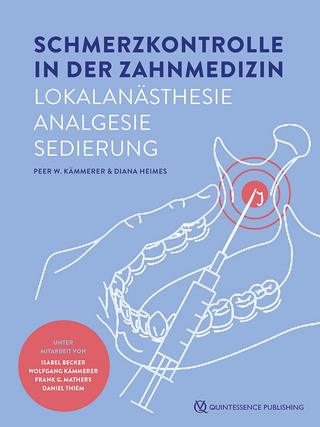
Topical Fluorides. A literature review
Anchor Academic Publishing (Verlag)
978-3-96067-142-8 (ISBN)
Fluoride dentifrices have been shown in numerous clinical trials to be effective anticaries agents and have been recognized as a major cause of the remarkable decline in caries prevalence in many developed countries. Dentifrices have been widely adopted around the world as the principle means of delivering topical fluoride and obtaining caries preventive benefits. Although there is documented literature on the use of topical fluorides, the issue needs to be further researched based on the recent documeanted literature and guidelines regarding use of topical fluorides. Hence, the present review was conducted with the aim to review the available literature on the use and effectiveness of different topical fluorides used in dentistry.
Text Sample:
Chapter 7: HOME APPLIED / SELF APPLIED:
FLUORIDE DENTRIFICES:
Probably the most widespread and significant vehicle used for fluoride has been toothpastes. Introduced in the late 1960s and early 1970s, their rapid increase in market share was remarkable. The consensus view from developed countries was that the introduction of fluoride toothpaste was the single factor most responsible for the massive reduction in dental caries seen in many countries during the 1970s and 1980s.
Toothpaste has an important functions in maintaining oral health. It helps the consumers in the removal of plaque and debris by its detergent action. Polishing the tooth surface with toothpaste helps prevent the accumulation of microorganisms and debris. In modern life, toothpastes are used by individuals on a daily basis and hence can be a source of various therapeutic agents including F.29 Toothpastes containing F were first available commercially in the 1970s and are the major source of F in some communities where fluoridated drinking water is not available. F is added into toothpastes mostly as sodium fluoride (NaF), sodium monofluorophosphate (MFP), amine fluoride, and stannous fluoride15. The active ingredient in this toothpaste is sodium fluoride. This agent can be recommended for children 6 years and older and adolescents who are at high risk of caries and who are able to expectorate after brushing. Dentists may also prescribe this agent for adolescents who are undergoing orthodontic treatment, as they are at increased risk of caries during this time. The other ingredients of toothpaste may also affect the availability of F in the oral cavity. Tooth brushing with fluoridated toothpaste is close to an ideal public health method in that its use is convenient, inexpensive, culturally approved and widespread [Burt, 1998].
This is especially true in the case of calcium containing abrasives due to their potential to inactivate the F. Similarly, F will react with silica to form fluorosilicates if a sufficient amount of detergent is not present. The use of fluoridated toothpastes has been demonstrated to have a caries reduction efficacy 25% greater than that for non-fluoridated tooth pastes. However, the benefits and therapeutic efficacy of using fluoridated tooth pastes may be affected by multiple factors such as the concentration of F, the amount of toothpaste used, and individual variations including the duration and frequency of brushing and rinsing behavior. The main concern with this delivery method is inappropriate handling, particularly by children. The ingestion of fluoridated toothpastes can produce serious toxic effects and appropriate adult supervision is essential for children using toothpaste. Toothpastes are available in a wide range of F concentrations.
Toothpaste is a paste or gel dentifrice that is composed of water, abrasives, humectants, detergents, flavoring agents, antibacterial agents, and most important fluoride. Abrasives, which include calcium carbonate, dehydrated silica gels, hydrated aluminum oxides, magnesium carbonate, phosphate salts and silicates, are incorporated to remove food debris, plaque, and surface stains from teeth (Marinho, 2003). Another toothpaste ingredient is humectants, which include glycerol, xylitol, and sorbitol. Humectants are agents that prevent water loss in toothpaste and reduce the tendency of toothpaste to dry into a powder. Additionally, detergents in the toothpaste create a foaming action that helps with even toothpaste distribution, which improves cleansing power. These include sodium lauryl sulfate and sodium N-Lauryl sarcosinate. In order to encourage the use of toothpaste, flavoring agents, such as saccharin, are included in toothpaste for taste. These flavoring agents come in a variety of colors and flavors. Even though these flavoring agents are sweeteners, they do not promote tooth decay (Marinho, 2003). Understandably, antibacterial agents, such as Triclosan and zinc chlo
| Erscheinungsdatum | 18.06.2017 |
|---|---|
| Sprache | englisch |
| Maße | 155 x 220 mm |
| Gewicht | 152 g |
| Themenwelt | Medizin / Pharmazie ► Zahnmedizin |
| Schlagworte | Acidulated Phosphate Fluoride • Amine fluoride • Anticaries agent • Caries Prevention • dental caries • Fluoride dentifrice • Fluoride varnishes • Library • Prevention of dental caries • Study of literature • tooth decay |
| ISBN-10 | 3-96067-142-3 / 3960671423 |
| ISBN-13 | 978-3-96067-142-8 / 9783960671428 |
| Zustand | Neuware |
| Haben Sie eine Frage zum Produkt? |
aus dem Bereich


